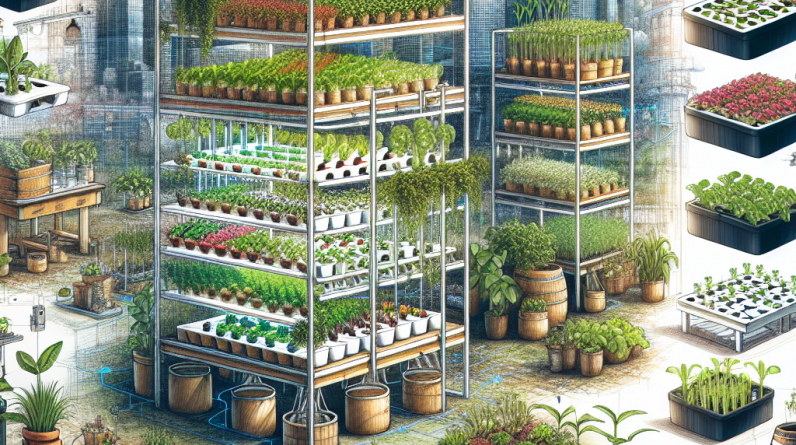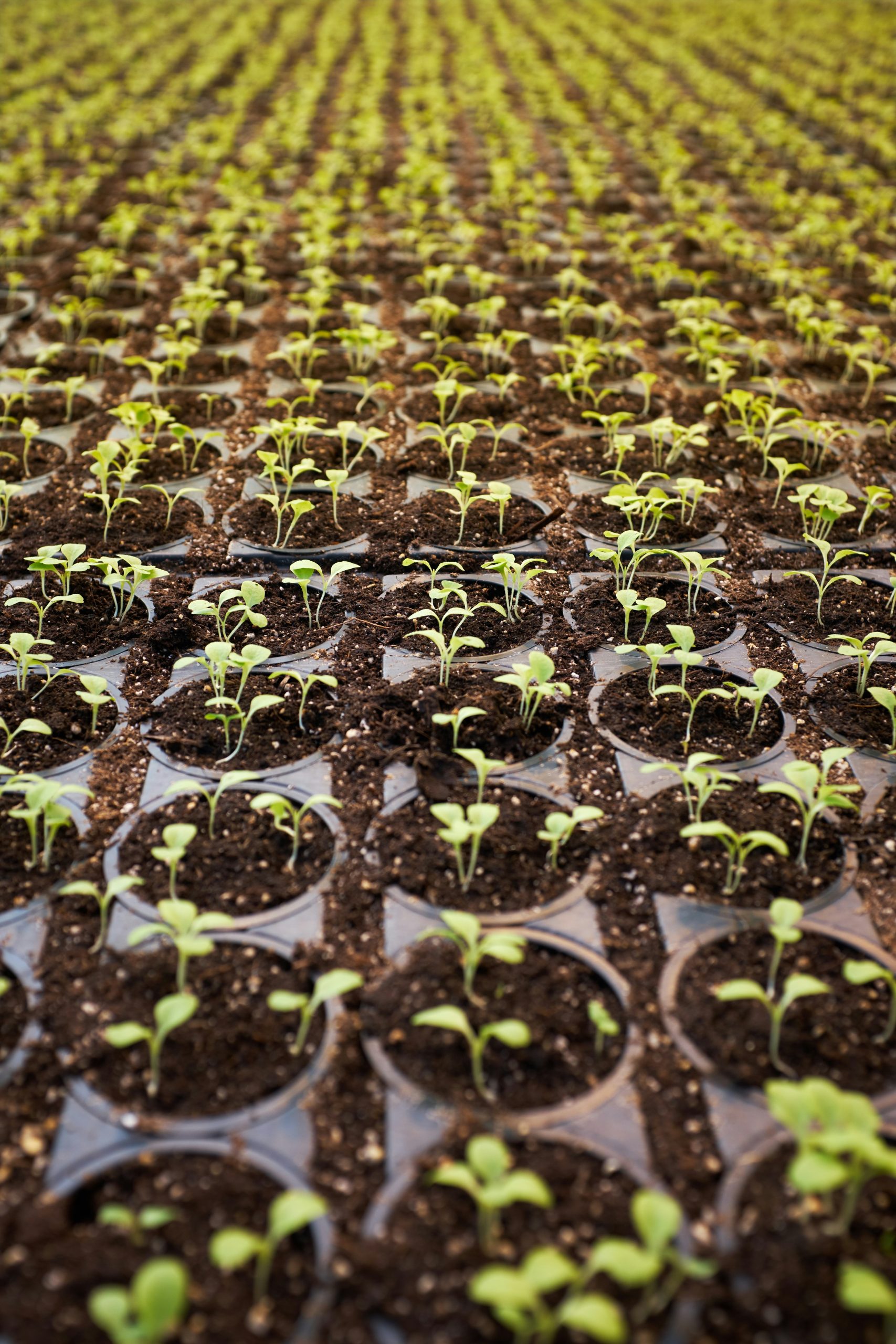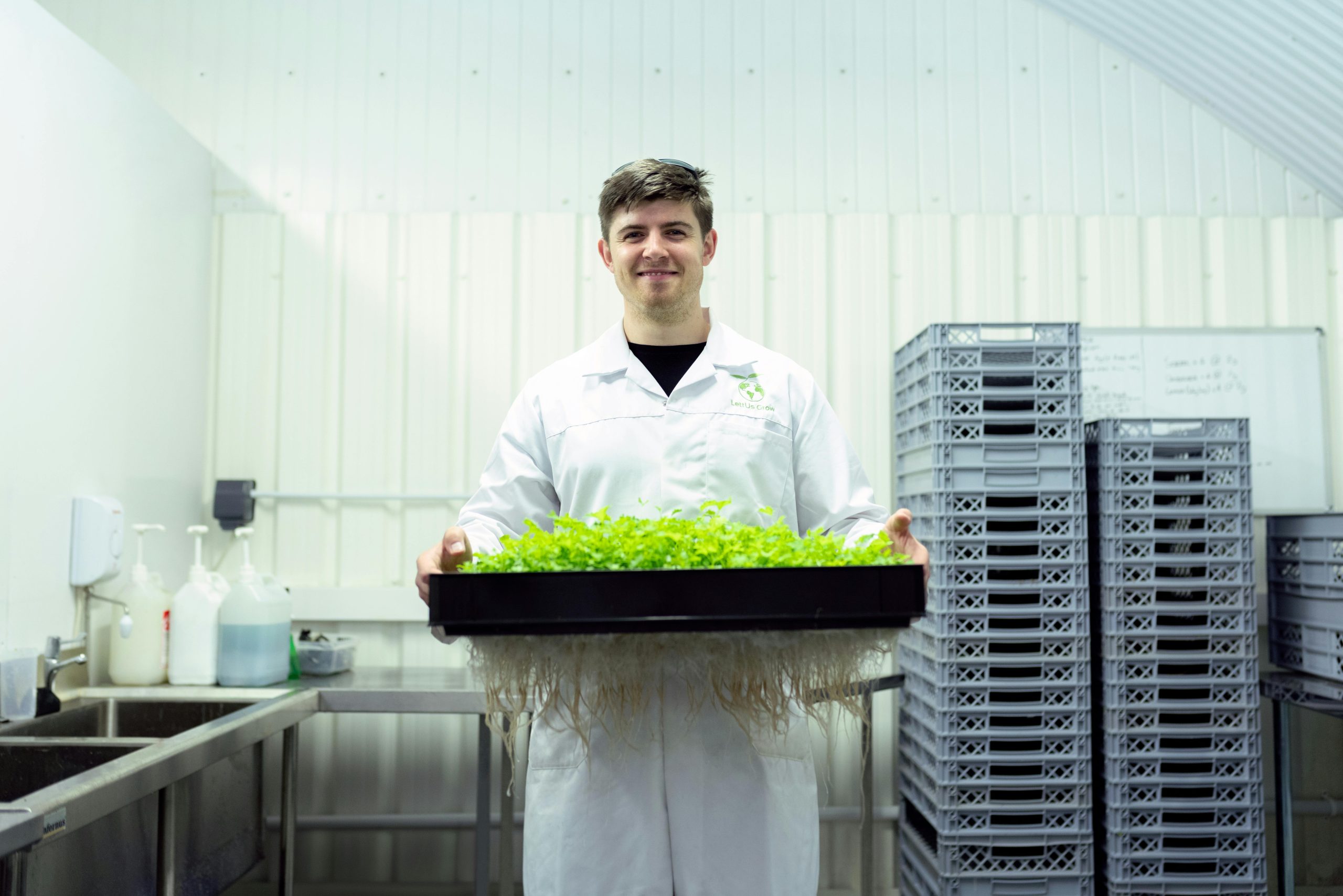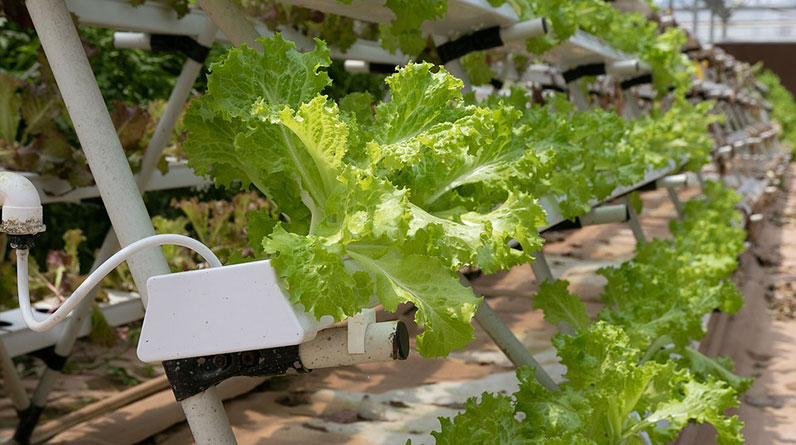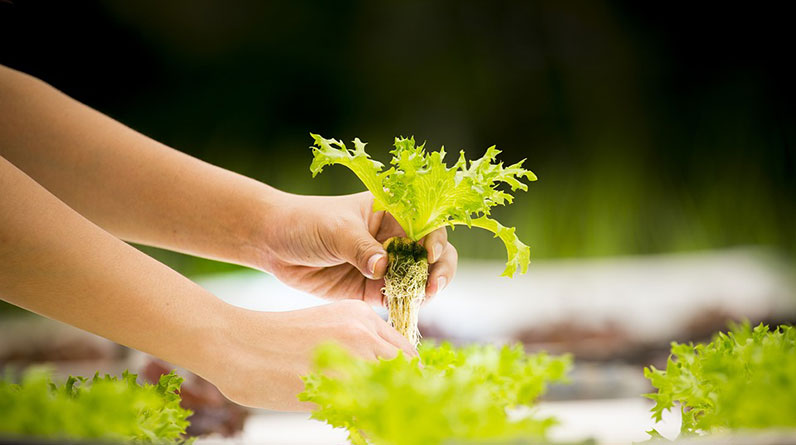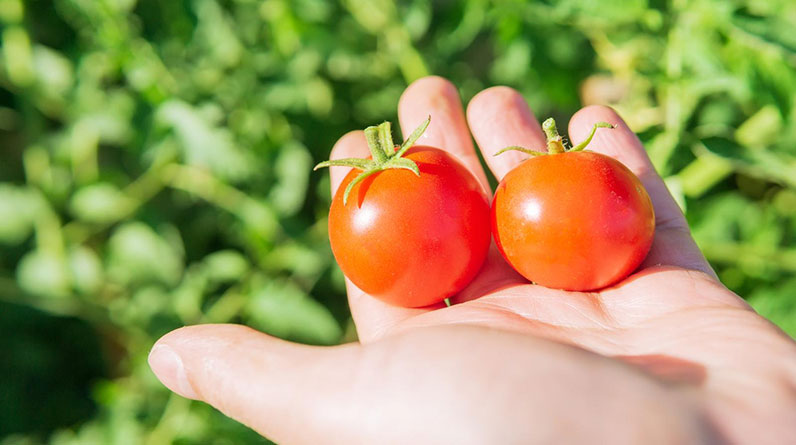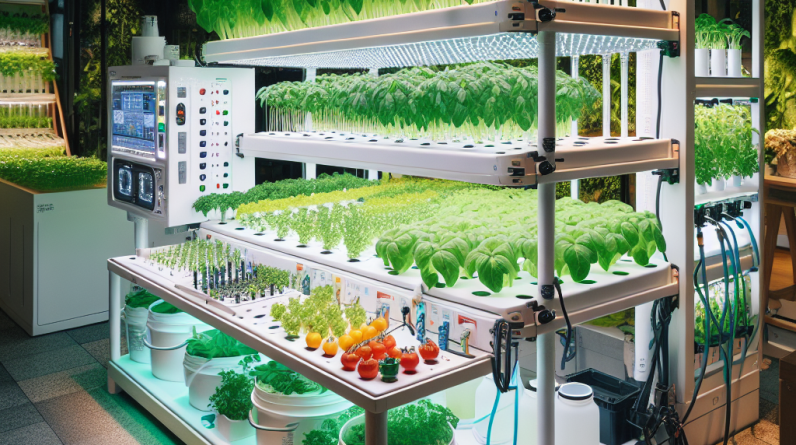
Step 1: Understand Hydroponics Basics
What is Hydroponics?
Growing plants without soil? Yep, that’s exactly what hydroponics is all about! It’s a method of growing plants in a nutrient-rich water solution. This approach can lead to faster growth and bigger fruits and veggies compared to traditional soil gardening.
Using hydroponics not only saves space but also allows for growing vegetables indoors year-round. You don’t need a backyard or garden plot, and it’s amazing how much you can grow in your living space.
Understanding the basics of hydroponics opens up a world of possibilities! And trust me when I say, getting hands-on with it is one of the best ways to learn.
The Benefits of Hydroponics
Why should you consider hydroponics for your indoor gardening? One of the major perks is the ability to grow fresh vegetables all year long. With controlled indoor conditions, you get to bypass seasonal limitations.
Hydroponics can also conserve water since the system recirculates, using up to 90% less than traditional gardening. Plus, fewer pests and diseases mean less hassle and fewer chemicals.
It’s not all about practicality, though. There’s something incredibly rewarding about nurturing your plants in a hydroponic system and watching them thrive right in your home!
Choosing Your Hydroponic System
There are several types of hydroponic systems, from deep water culture to nutrient film technique to aeroponics. Each has its unique benefits. When choosing one, consider factors like the space you have and the types of vegetables you want to grow.
For beginners, I often recommend trying a simple system like Kratky (deep water culture) where plants float on a nutrient solution. It’s easy to set up, and you don’t need a pump or timer!
As you get comfortable, you might want to explore more complex systems. The great thing is, no matter your choice, you’re on a path to growing fresh veggies indoors!
Step 2: Gather Your Supplies
What You’ll Need
Starting with hydroponics doesn’t require a fortune, but having the right supplies is key. You’ll need a growing medium—things like rock wool, clay pellets, or coconut coir work great. Don’t forget your nutrient solutions as plants will need them to thrive.
You’ll also need some containers to hold your plants and a light source if you’re growing in a space without much natural sunlight. LED grow lights are my go-to for their efficiency!
Getting organized and collecting everything ahead of time will make the setup process a breeze. Plus, you can easily find most supplies online or at your local garden store.
Setting Up Your Hydroponic Garden
Once you’ve got all your supplies, it’s time to set up! Start by preparing your containers and filling them with your chosen growing medium. This holds your plants in place while also allowing for excellent drainage.
Next, mix your nutrient solution according to the instructions—this part is crucial! And remember, plants can’t survive on just water; they need those essential nutrients!
After that, plant your seedlings or seeds directly into the medium you’ve prepared. It’s incredibly satisfying to see your little green friends settled in and ready to grow!
Creating the Perfect Environment
Think of your indoor garden as a mini-ecosystem. To make sure your plants thrive, maintain a consistent temperature and humidity level. Using a thermometer and hygrometer can help you keep track.
Light is also important! If you’re depending on artificial lights, set them on a timer to mimic day and night cycles. Most veggies love around 12-16 hours of light a day.
Don’t forget about airflow. In tight spaces, a small fan can help circulate air. This makes for happier, healthier plants. Trust me—your veggies will thank you!
Step 3: Monitor and Maintain
Daily Check-Ins
Every day, take a few minutes to check on your hydroponic system. Look closely for any signs of plant stress or pests. Early detection is key! Yellowing leaves? Adjust your nutrient levels!
Check the pH of your nutrient solution as well—keeping it balanced will ensure your plants absorb everything they need. Aim for a pH level around 5.5 to 6.5 for optimal growth.
Making daily check-ins part of your routine not only helps your plants but also gives you a moment of joy as you watch them grow!
Nutrient Adjustment
As your plants grow, their nutrient needs will change, and it’s important to adjust your solutions accordingly. Make sure to follow specific guidelines for each type of plant, as some are heavier feeders than others.
Remember to replace the nutrient solution every two weeks to keep everything fresh. This ensures your plants are getting the latest and greatest in nourishment!
It’s a little bit of work but getting into the habit of updating your nutrient solution will make a huge difference in your harvest and the health of your plants.
Harvest Time!
One of the most exciting steps—harvesting! The exact timing can vary with the plant type, but generally, when it looks ripe and delicious, it’s ready! Don’t hesitate to pick them fresh; nothing beats the flavor of homegrown veggies.
Some plants, like lettuce and herbs, can be harvested continually. Just snip off what you need, and they’ll keep growing back. It’s like a never-ending buffet!
Once you’ve harvested, you can savor the literal fruits of your labor. Make sure to share with friends and family; they’ll love tasting the fresh produce you grew in your own home!
Step 4: Troubleshoot Common Issues
Pest Control
Even in a hydroponic system, pests can make an appearance. Keeping a clean environment and regularly checking your plants can help prevent infestations. If you do spot something, act fast!
I like using natural solutions like neem oil or insecticidal soap. They’re effective without bringing harsh chemicals into my indoor garden.
It’s always better to nip the problem in the bud—literally! The sooner you address these challenges, the better for your plants.
Dealing with Nutrient Deficiencies
Sometimes, even if you’re on top of things, your plants might show signs of nutrient deficiencies. Yellowing leaves can mean nitrogen deficiency, while stunted growth might signal a lack of phosphorus.
It’s a good idea to have a reference guide on the signs of nutrient deficiencies handy, so you can troubleshoot quickly. Don’t be discouraged—every gardener faces challenges!
If you make corrections early on, your plants will bounce back. Stay patient and dedicated. You got this!
Environmental Issues
Temperature fluctuations, low light levels, or high humidity can stress your plants. Be sure to monitor the environment consistently to prevent any problems.
If you notice any nasty surprises, don’t panic! Adjust your setup as needed. Maybe turn the lights on earlier or get a small heater in a cold room.
Learning how to adjust and troubleshoot is part of the fun. It’s a learning process that pays off big time!
Step 5: Enjoy the Bounty
Cooking Fresh Meals
Once you’ve harvested your veggies, what’s next? Cooking delicious meals, of course! Fresh produce can elevate any dish. Imagine whipping up a salad with freshly harvested lettuce or pesto with your homegrown basil—talk about a treat!
Experiment with recipes that let the clean, fresh flavors of your veggies shine. The satisfaction of eating food you’ve grown yourself is unmatched.
Cooking with your own produce is also a fantastic way to share with friends and family. Enjoy it together and maybe have a little dinner party showcasing your hard work!
Sharing Your Success
Don’t keep all this amazing success to yourself! Share your hydroponics journey on social media or with gardening groups. You never know who you might inspire to start their own indoor garden.
Plus, talking with fellow hydroponics enthusiasts can lead to great tips and new ideas. Gardening is all about community and sharing knowledge!
It’s always uplifting to see others succeed just as you have. Remember, we’re all in this together!
Keeping the Cycle Going
Once you’ve tasted success, you may want to keep growing! Consider planting a new batch of seeds or trying new vegetable varieties that catch your eye. There’s no limit to the adventure ahead!
As you gain skill and confidence, don’t hesitate to experiment. Hydroponics is a flexible medium, and being creative can lead to unexpected, delightful results.
The joy of growing fresh vegetables inside your home is something you’ll cherish long after the initial learning curve! So go ahead—dive back in!
Frequently Asked Questions
1. What vegetables can I grow indoors using hydroponics?
You can grow a variety of vegetables indoors, including lettuce, spinach, herbs like basil and mint, tomatoes, peppers, and even strawberries. Choose what you love to eat!
2. Do I need to use artificial lights for hydroponics indoors?
If you don’t have enough natural sunlight, using artificial lights is a must. LED grow lights work really well for providing the spectrum of light your plants need to thrive.
3. How often should I check the pH level of the water?
It’s a good practice to check your pH levels weekly or even bi-weekly. Maintaining a pH between 5.5 and 6.5 is essential for optimal nutrient absorption.
4. Can hydroponics be done without any prior gardening experience?
Absolutely! Hydroponics is user-friendly and a fantastic way to learn about plant growth. Starting with easier plants like herbs or lettuce can help build your confidence!
5. What should I do if my plants are not growing well?
Check for any signs of stress, such as yellowing leaves or pests. Assess the pH, temperature, and nutrient concentration. Making adjustments early can often rectify the issues!


